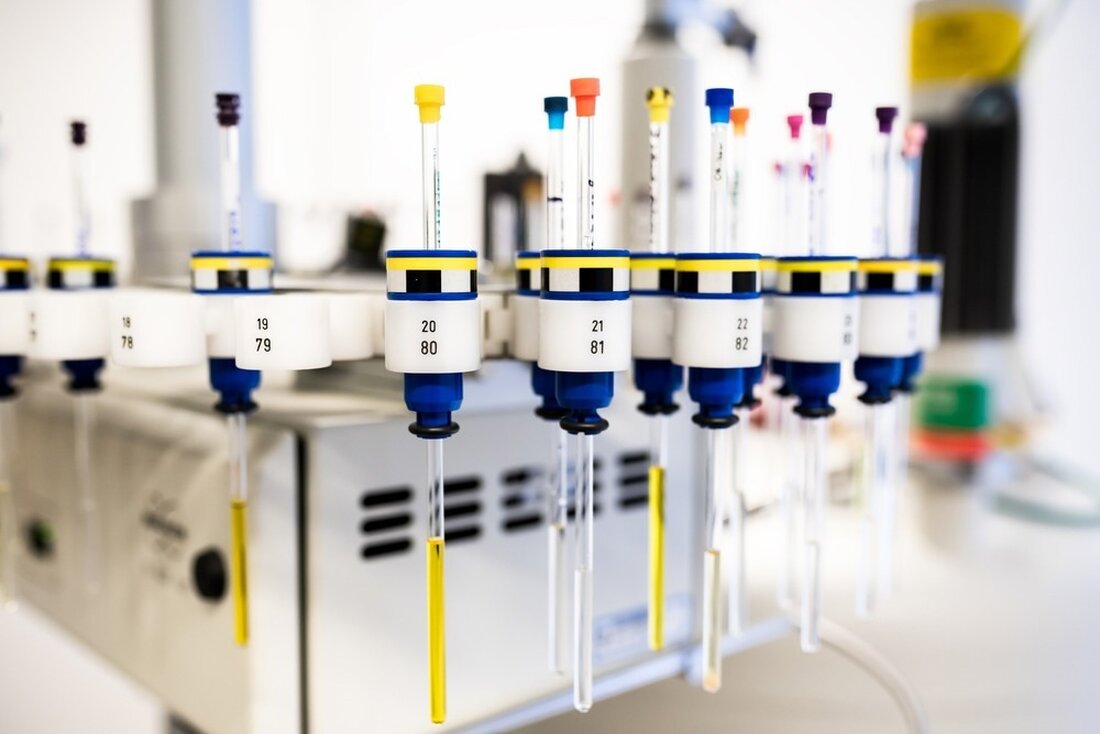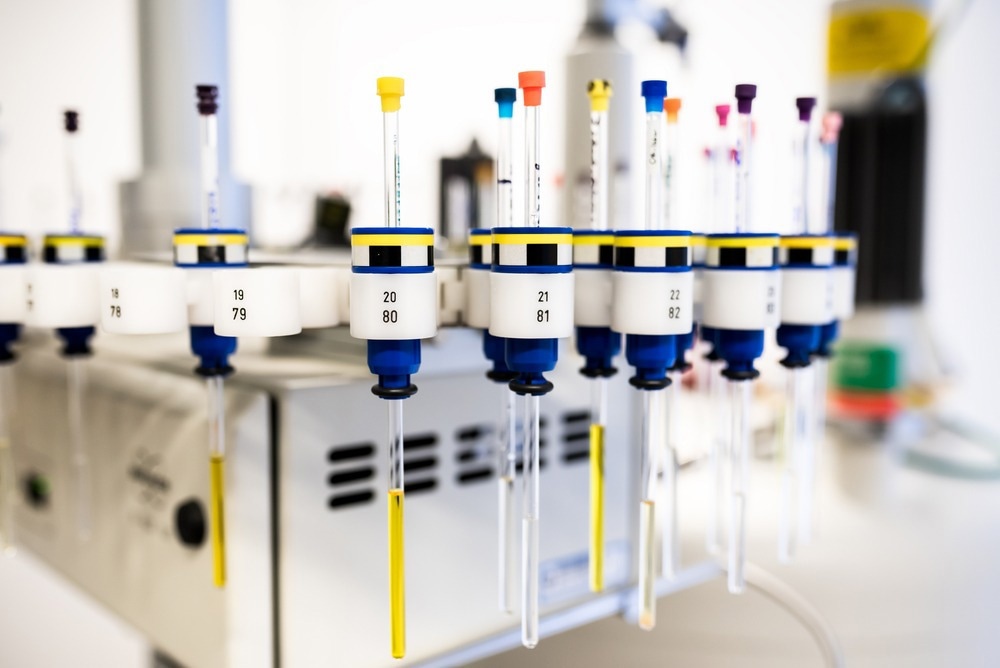The potential of NMR-based blood profiling as a single-domain assay to predict the onset of multiple diseases simultaneously
In a recent study published in Natural Medicine, researchers examined the potential of a nuclear magnetic resonance spectroscopy (NMR)-based metabolic platform to assess the risks of developing various diseases. Study: Metabolic Profiles Predict Individual Outcomes in Multiple Diseases. Image source: Forance/Shutterstock Background Timely identification and prevention of risk factors associated with disease development are crucial. Recently, metabolic analyzes have been performed to identify individuals at high risk; However, metabolic data were considered insufficient for estimating disease risk. NMR spectroscopy enables rapid and relatively inexpensive molecular studies compared to other metabolomic techniques such as mass spectroscopy. Above …

The potential of NMR-based blood profiling as a single-domain assay to predict the onset of multiple diseases simultaneously
In a recent study published in Natural medicine Researchers investigated the potential of a nuclear magnetic resonance spectroscopy (NMR)-based metabolic platform to assess the risks of developing various diseases.

Studie: Stoffwechselprofile sagen individuelle Ergebnisse bei mehreren Krankheiten voraus. Bildquelle: Forance/Shutterstock
background
Timely identification and prevention of risk factors associated with disease development are crucial. Recently, metabolic analyzes have been performed to identify individuals at high risk; However, metabolic data were considered insufficient for estimating disease risk. NMR spectroscopy enables rapid and relatively inexpensive molecular studies compared to other metabolomic techniques such as mass spectroscopy.
About the study
In the present study, researchers examined whether NMR spectroscopy-based serological metabolic profiles reflect the true physiological status of individuals and contribute to clinical biomarkers to estimate the risk of developing 24 diseases, including vascular, metabolic, respiratory, neurological and musculoskeletal cancers in 22 centers.
A neural network (NN) was trained to simultaneously learn metabolic states (METs) specific to medical disorders from 168 metabolic markers quantitatively determined in 117,981 individuals with a follow-up of 1,400,000 million unique years from the United Kingdom (UK) Biobank (BB). . To validate the results of the model, four different cohorts, namely the Rotterdam study cohort, the Whitehall II cohort, the PROspective Study of Pravastatin in the Elderly at Risk (PROSPER) cohort and the Leiden Longevity PAROFF study cohort, were analyzed using the same 1H NMR metabolomics assay.
In addition, three cohorts from the BBMRI-NL consortium were analyzed. Markers included fatty acid and amino acid metabolites associated with fluid balance and carbohydrate metabolism. Their association with commonly used clinical markers such as creatinine, albumin and glucose was assessed. Cox proportional hazard modeling (CPH) was used for the analysis and hazard ratios (HRs) and odds ratios (ORs) were calculated.
To maximize the generalizability of the study results, the data were spatially divided by recruitment centers. After final estimates were obtained, test set predictions were aggregated to Whitehall II for further analysis. Data were analyzed by sex and age (age+sex) only by American Heart Association (ASCVD) cardiovascular estimators and PANEL estimators (including more than 30 estimators with physical examination, laboratory measurements, and lifestyle data).
The estimates were further validated by CAIDE and FINDRISC scores for dementia and type II diabetes (T2D), respectively. In addition, the NMR estimates were correlated with the frequency of medical events during the observation period and compared with clinical information based on C-index delta values. SHAP (Shapely Additive Explanation) values were determined for all 24 diseases examined and a UMAP (Uniform Manifold Approximation and Projection) analysis was carried out to find out which metabolites had the greatest influence on disease risks.
Results
The average age of the sample population was 58 years, of which 54% were women, and participants were followed for an average of 12 years, for a total of 1,435,340 unique years. METs were associated with event rates for the diseases studied other than breast cancer, and at a 10-year estimate, the combination of MET and age+sex predictors met or exceeded other estimates.
In addition, the MET data complemented clinical estimates for eight diseases, including type 2 diabetes, heart failure and dementia. The high OR values for T2D, abdominal aortic aneurysm (AAA), and heart failure were 62, 14, and 11, respectively. In contrast, the OR values for stroke, major adverse cardiac event (MACE), atrial fibrillation, all-cause dementia, and COPD (chronic obstructive pulmonary disease) were low and for asthma and Glaucoma even lower.
Metabolic status contained significantly less estimated data compared to clinical estimates for glaucoma, cataracts, and cancer of the colon, skin, prostate, and rectal tissue and had a larger estimate than the ASCVD and age + sex estimates for kidney disease, T2D, and liver disease. All tested models were well calibrated in the UKBB cohort, and the four external cohort results validated significant discriminatory improvements by adding MET to the age+sex estimator data for COPD, T2D, coronary artery disease (CHD), atrial fibrillation and heart failure.
Additionally, C-index values showed that MET data significantly improved comprehensive PANEL estimates for eight diseases, including COPD, T2D, MACE, CHD, kidney disease, heart failure, and dementia. The discriminatory gains generally resulted in utility gains. After MET data adjustments for comprehensive clinical predictors, adjusted HR estimates were obtained for T2D (HRPANEL 2.5, HRGe+Gender 3.8), heart failure (HRPANEL 1.5, HRAGe+Gender 1.8), and all-cause dementia (HRPANEL 1.5, HRAGe+Gender 1.6). , MACE (HRPANEL 1.4, HRAge+Sex 1.6) or COPD (HRPANEL 1.4, HRAge+Sex 1.6) showed a clear distinction between the incident risk trajectories.
MET-HRs were externally validated with age and gender adjustments for CHD, COPD, heart failure, all-cause dementia, and atrial fibrillation. Highly potent metabolites identified included glycine, tyrosine and glutamine, carbohydrate metabolism metabolites, albumin, creatinine, glycoprotein acetylation (GlycA), acetoacetate and acetone. However, apart from albumin, creatinine, glucose, creatinine/cystatin C and lipids, no strong correlations were observed between the NMR data and PANEL estimates.
Remarkable associations between creatinine and AAA, glucose, and T2D and GlycA with COPD and lung cancer have been observed. Albumin, creatinine, leucine, tyrosine and glutamine were identified as the main factors in the estimated risk of all-cause dementia. Interestingly, the attribution profiles of high-risk individuals were consistently dominated by low levels of linoleic acid (LA), albumin, docosahexaenoic acid (DHA), glycine, and histidine.
Diploma
Overall, the study results highlighted the potential of NMR-based metabolomic profiling to simultaneously elucidate the incident risk of multiple medical diseases.
Reference:
- Buergel, T. et al. (2022) „Stoffwechselprofile sagen individuelle Multikrankheitsergebnisse voraus“, Nature Medicine. doi.org/10.1038/s41591-022-01980-3. https://www.nature.com/articles/s41591-022-01980-3

 Suche
Suche
 Mein Konto
Mein Konto
